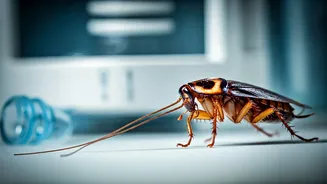Seasonal Wing Patterns
Tropical butterflies employ a remarkable strategy to manage the size of their eyespots, relying on a straightforward DNA mechanism to adapt to the seasons.
This adaptability is particularly crucial for survival in environments where conditions vary significantly throughout the year. The ability of the butterflies to alter their wing patterns underscores the power of natural selection in shaping species to their environments. The research delved into the genetic basis of this phenomenon, revealing the influence of environmental cues on pattern expression. This offers a window into how insects evolve in response to fluctuating climates. It shows that even small alterations in DNA can result in striking differences in the insect's appearance. The research further suggests that understanding these mechanisms can inform conservation efforts. It can also enhance pest control strategies by shedding light on insect behavior.
DNA's Role Revealed
The research identified a specific DNA switch that controls the adjustment of wing patterns in response to seasonal changes. This finding highlights the genetic basis of this adaptation. By examining the butterflies' DNA, scientists could trace the relationship between genetic variation and physical traits. The discovery underscores how natural selection favors specific traits, enabling butterflies to thrive in changing environments. The simple nature of the DNA switch suggests a highly efficient and adaptable mechanism. The process emphasizes the role of environmental factors in shaping the expression of genes, a concept known as epigenetics. This understanding enables scientists to predict the insect's reactions to environmental changes and their influence on the insects. It helps to predict the impacts of climate shifts on insect populations, aiding conservation practices.
Insect Endocrine System
The research highlights the connection between the insect's endocrine system and the adjustment of its wing patterns. The endocrine system, akin to the human hormonal system, helps insects interpret and respond to environmental signals. The seasonal adaptations observed in butterflies are managed through the endocrine pathways. This means the butterflies can adapt with the help of hormones in the body. The endocrine system provides a biological mechanism that allows the insects to interpret and respond to environmental cues. Research suggests a link between hormone regulation and the expression of wing patterns. These interactions provide a complex interplay that enables butterflies to adjust to the seasons. The study sheds light on the endocrine system of insects and also opens new doors into how these systems influence the insects.
Adapting and Surviving
The ability of butterflies to adapt their wing patterns is critical to survival in changing environments. The size and shape of eyespots on their wings serve various roles, including predator deterrence and mate attraction. By altering these patterns, butterflies can optimize their chances of survival in different seasonal conditions. The seasonal shifts in the size of the eyespots help butterflies to blend into their surroundings and avoid predators. In the warm season, the patterns are adapted to enhance the insect's ability to locate a mate. This adaptation strategy highlights the importance of natural selection in driving evolutionary changes that enhance survival. It showcases how even seemingly minor adjustments to an insect's appearance can have a big impact on its chances of survival, demonstrating the incredible efficiency of evolutionary processes.
Future Research Directions
This research opens avenues for future investigations into insect adaptation and evolution. By comprehending the genetic and hormonal mechanisms that control wing patterns, scientists can explore the broader implications for insect ecology and conservation. It will assist in devising conservation plans. This understanding could aid in predicting how insects respond to climate change. The research gives insight into how insects have adapted to changing environments over time. The DNA switch and endocrine pathways could be potential targets for pest management strategies. Future studies can focus on the specific genes, proteins, and hormones that play key roles in this process.










